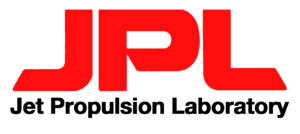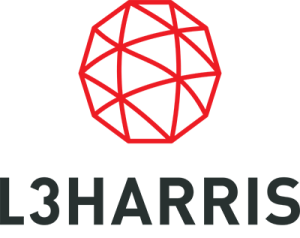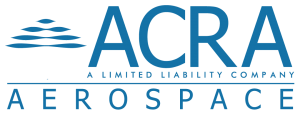Strategic Executive Search: Balancing Experience and Potential

Attracting top talent in today’s dynamic job market goes beyond traditional compensation packages. Often underestimated in the corporate world, startups are demonstrating their ability to attract and retain high-caliber professionals. These smaller entities attract individuals eager to contribute to significant growth and innovation, thanks in part to effective collaborations with specialized executive search firms.
The Value of Experience in Leadership Roles
The significance of experience in leadership cannot be overstated, especially when strategic decision-making and risk management are critical to business success. Experienced leaders bring a robust understanding of industry dynamics and a seasoned perspective that enriches their approach to business challenges. Their ability to steer their organizations through complex scenarios is enhanced by their extensive knowledge and tested skills.
Benefits of Experience
Experience in leadership roles is invaluable, particularly in industries requiring high-stakes decision-making and precise execution. Seasoned leaders bring a host of advantages, from deep industry knowledge and strategic foresight to crisis management skills that prove essential in navigating challenging markets. For instance, in an aerospace executive search, the recruitment of a Director of Program Management with extensive industry experience is crucial.
Such an executive would adeptly handle complex challenges, ensuring compliance with stringent regulations and leading innovative programs that push technological boundaries. Their established networks also create avenues for new business opportunities and partnerships, which are crucial for sustained organizational growth and stability.
Risks of Overvaluing Experience
While the benefits of experience are significant, overemphasizing it can lead to potential pitfalls:
- Resistance to Innovation: Leaders who are set in their ways may resist new technologies or innovative processes essential for keeping the company competitive in rapidly evolving markets.
- Cultural Misalignment: An experienced leader’s traditional methods might clash with the dynamic culture of a more agile company, potentially leading to disruption and ineffective integration.
- Inflexibility: In some cases, highly experienced leaders may lack the flexibility to adapt to new market trends or organizational changes, hindering a company’s ability to pivot when necessary.
To balance these risks, it’s crucial for companies to assess a leader’s experience as well as their ability to adapt and embrace new challenges. In sectors like aerospace, where the pace of innovation is rapid, the integration of seasoned professionals who are also open to new approaches can be particularly beneficial.
The Potential of Emerging Leaders
Emerging leaders represent a unique asset within organizations, embodying the promise of future success. Their introduction to leadership roles signifies a strategic move to infuse the organization with new ideas and approaches that challenge the status quo. Effective recognition and development of these individuals are critical to harnessing their full potential and aligning it with the company’s strategic objectives.
Identifying High Potential
Identifying high-potential leaders within an organization is crucial, particularly in sectors such as private equity, where the ability to foresee and capitalize on market shifts can determine the success of an investment. In private equity executive search, high-potential leaders are often equipped with an adaptability and eagerness to learn, as well as a strategic vision that aligns with future business landscapes.
For instance, in private equity, a promising candidate might be one who has successfully navigated complex deal structuring or expansion strategies in past roles, showcasing an ability to drive significant returns under pressure. This foresight and capability to handle high-stakes scenarios are vital markers of potential, indicating their readiness to take on pivotal roles that will influence the strategic direction and growth of the firm.
Developing and Nurturing Potential
The strategic development and nurturing of high-potential leaders are crucial to creating a resilient and innovative leadership pipeline. Here are key strategies for effectively developing these promising leaders:
- Tailored Mentoring Programs: Pair high-potential individuals with experienced executives to provide guidance, share insights, and transfer invaluable tacit knowledge. This one-on-one mentoring helps emerging leaders understand complex organizational dynamics and refine their decision-making skills.
- Strategic Project Exposure: Involve these leaders in critical projects that impact the company significantly. This exposure is crucial for them to gain hands-on experience in managing high-stakes situations and understanding the strategic implications of their decisions.
- Professional Development Opportunities: Offer structured opportunities for continuous learning, including leadership workshops, industry conferences, and advanced educational programs. These initiatives should be aligned with the individual’s career trajectory and the company’s strategic needs.
- Performance Feedback and Coaching: Implement a continuous feedback mechanism that provides these leaders with real-time insights into their performance. Supplement this with professional coaching to help them develop specific competencies and leadership skills.
By implementing these focused development strategies, organizations can ensure that high-potential leaders are prepared for future executive roles and are deeply integrated into the fabric of the company’s culture and strategic objectives. This approach accelerates their readiness for higher responsibilities, aligns their career growth with the overarching goals of the organization, and ultimately, enhances retention and long-term organizational success.
Balancing Experience and Potential in Hiring Decisions
Establishing an effective hiring strategy involves a nuanced approach that values both the experience and the untapped potential of candidates. This balance is crucial for fostering a dynamic and innovative leadership team that can drive an organization forward in a competitive market. Below, we explore how to create a balanced evaluation framework and integrate new leaders effectively, ensuring they align with your company’s immediate and long-term goals.
Creating a Balanced Evaluation Framework
Creating a balanced evaluation framework is essential to ensure that both experience and potential are adequately assessed during the recruitment process. Here’s how organizations can structure their evaluation:
- Comprehensive Metrics: Develop metrics that evaluate the proven track record, technical skills, and ability to adapt and innovate. Metrics might include leadership effectiveness, problem-solving skills, and past project successes.
- Behavioral and Situational Assessments: Utilize behavioral interviews and situational tests to assess how candidates handle specific scenarios they might encounter in their new roles. This helps gauge their practical application of knowledge and skills.
- Potential-Based Assessments: Include assessments that measure potential by looking at candidates’ learning agility, emotional intelligence, and motivation levels. These indicators can predict how well they might navigate future challenges.
A well-rounded evaluation framework supports a hiring process that balances the scales between experience and potential, optimizing the recruitment outcomes for your organization.
Integration of New Leaders
The integration of new leaders into an organization plays a pivotal role in how successfully they can apply their skills and lead their teams. Effective integration strategies include:
- Tailored Onboarding Programs: Develop onboarding processes that are customized to the needs of new leaders, ensuring they understand the organizational culture, processes, and expectations.
- Mentorship and Network Integration: For emerging leaders, provide mentorship programs that connect them with seasoned executives and key stakeholders. This facilitates smoother transitions and quicker acclimation.
- Strategic Introductions and Role Clarity: For experienced leaders, organize strategic meetings that align them with critical internal teams and clarify their roles and the expectations the organization has of them.
This approach facilitates a smoother transition for new leaders as well as aligns their capabilities and potential with the strategic needs of the organization, ensuring a greater impact on long-term success. Build a future-ready leadership team with BOB Search. Contact us for a consultation today!

























